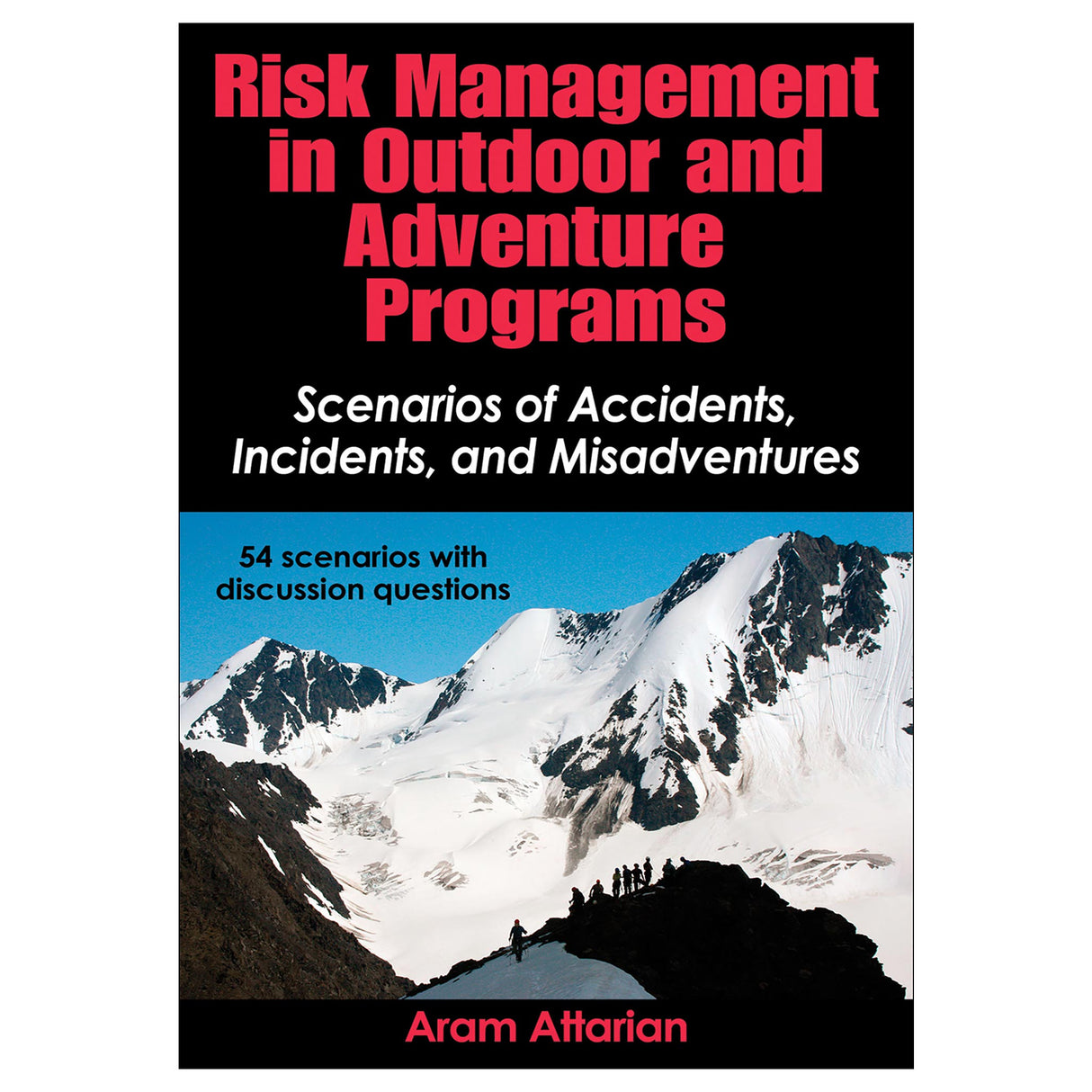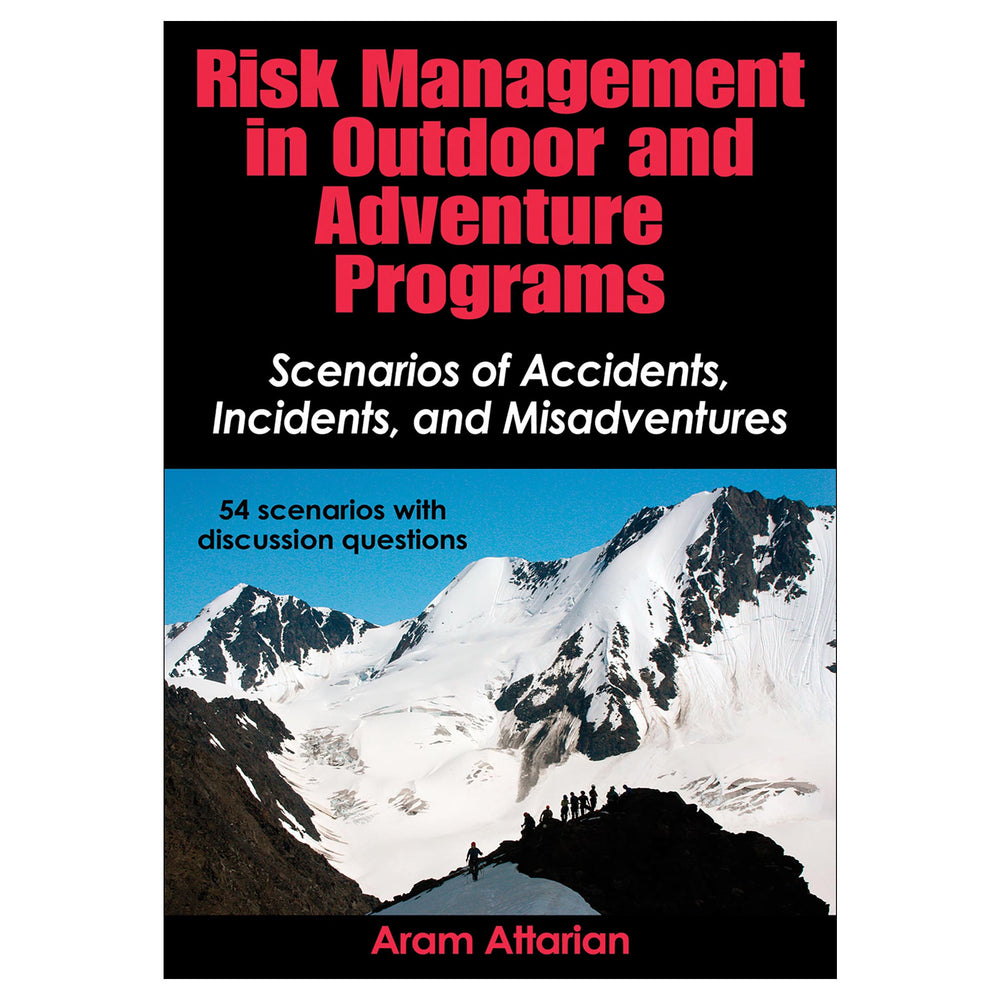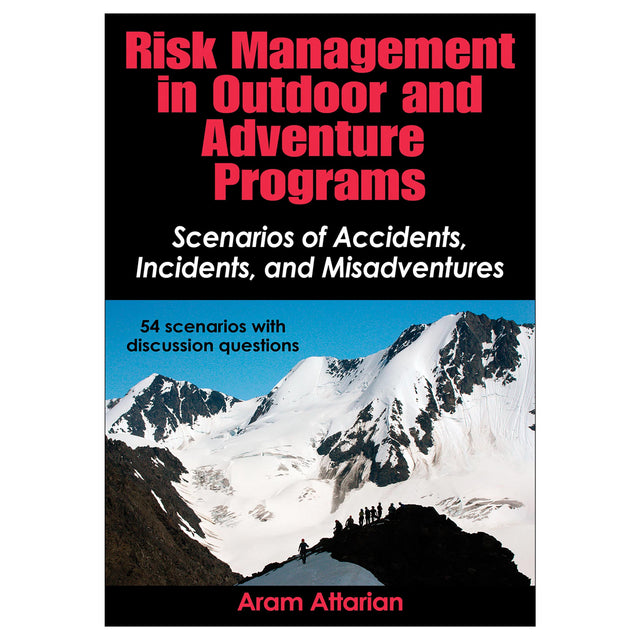Risk Management in Outdoor and Adventure Programs PDF
Scenarios of Accidents, Incidents, and Misadventures
Author: Aram Attarian
$40.95 CAD
Access Duration: 10 Years
Based on real-life experiences, Risk Management in Outdoor and Adventure Programs: Scenarios of Accidents, Incidents, and Misadventures offers both students and professionals practice in applying risk management strategies to situations encountered in outdoor and adventure programs.
Written by Aram Attarian, an experienced professor and professional in outdoor and adventure recreation, Risk Management in Outdoor and Adventure Programs presents a systematic model for determining why an incident happened and what could be done to prevent a repeat occurrence. More than 50 real-life scenarios represent various situations encountered in outdoor and adventure programming, such as peanut allergies, bridge jumping, stalking by mountain lions, and lightning strikes. These scenarios offer guidance in analyzing hazardous situations and applying appropriate strategies in safety and risk management. Each scenario is followed by questions that can guide discussion or promote research in concepts or policies that are important to outdoor and adventure programming.
Accidents and mishaps are a reality in outdoor and adventure programs. Applying risk management strategies to the scenarios in Risk Management in Outdoor and Adventure Programs gives outdoor adventure leaders increased knowledge of the inherent risks of their profession as well as their legal responsibilities in programming, leadership, and management. This text can help leaders and their participants enjoy safe and successful adventures in the great outdoors.
Chapter 1. Introduction to Risk Management
Risk Management Models
Incident Countermeasures
Emergency Action Plans
Summary
Chapter 2. Risk Management Legal Terms and Concepts
Contracts
Tort Law
Due Diligence
Duty to Warn
Summary
Chapter 3. Program Staff and Participants
Instructors and Guides
Staff Training
Program Participants
Summary
Responding to Emergencies
Open-Toed Shoes
Returning Staff
Methicillin-Resistant Staphylococcus Aureus
Peanut Allergy
Lost Student
Poor Route Finding
Staying on Schedule
Solo Instructing
Medical History Can Make a Difference
Inappropriate Physical Contact
Waterfall Presents a Danger
Bridge Jumping
Client Injured While Rafting
Summit Attempt
Outing Turns Tragic
Injury on the Challenge Course
Day Hike Turns Into Overnight
Training Exercise Goes Wrong
Demonstration Goes Wrong
Lost Kayakers
Instructors Charged With Murder
Chapter 4. Environmental Conditions
Minimizing Objective Dangers
Summary
Scout Leaders Say They Got No Warning
Lightning Strikes Climbers
Lightning Strikes Campers
Man Struck by Lightning on Solo Hike
Excessive Heat Can Kill
Avalanche Kills Skiers
Mountain Lion Stalks Group
Black Bear Problem
Smile for the Camera
Snake Bite
Proceed With Caution When River Crossing
Student Drowns in a Stream Crossing
Drowning in a Forest Pool
Student Drowns After Jumping Into Backcountry Swimming Hole
Rescue Teams Save Church Group
Open Canoes Over Open Water
Chapter 5. Technology
Technology and Adventure and Guided Programs
Nontechnical and Technical Equipment
Personal Protection Equipment
Equipment Logistics
Clothing
Summary
Stranded Hiker Uses Personal Locator Beacon to Summon Help
Hikers Evacuated After Three SPOT Activations in Three Days
Anchor Fails, Student Sues
Fall From Climbing Wall
Instructor’s Inattention Blamed for Student’s Death
Repair Kits Can Be Deadly
Automated External Defibrillator in the Woods
Stove Fueling Incident Causes Serious Burns
Boiling Water Fills Boot
Boiling Water Scalds
Chapter 6. Transportation
Fifteen-Passenger Vans
Transportation Alternatives
Controlling Transportation Risk
Maintenance
Summary
Narrow Road Proves to Be a Challenge
Road Conditions Create Problem for Van Driver
Tripping Incident
Icy Road Conditions
Trailer Towing Presents Risks
No Brakes





